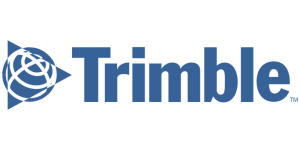What impact does the Knowledge Graph have on SEO strategies in 2024?
In the ever-evolving landscape of digital marketing, the advent of the Knowledge Graph has revolutionized how search engines like Google understand and disseminate information. As we navigate through 2024, it’s clear that this advanced system has left a profound impact on Search Engine Optimization (SEO) strategies. At JEMSU, a leading full-service digital advertising agency, our experts are continuously adapting to these changes, ensuring that our clients stay ahead of the curve in an increasingly competitive online space.
The Knowledge Graph is not just a tool for organizing information; it’s a framework that connects facts, entities, and the relationships between them, creating a more intuitive and responsive search experience for users. This AI-driven approach to data processing has compelled SEO professionals to rethink their strategies, pushing them to focus on semantic search and entity-based content optimization. As JEMSU dives deeper into the implications of the Knowledge Graph, we recognize the importance of aligning our SEO tactics with the intent behind user queries, rather than relying solely on traditional keyword optimization.
Moreover, in 2024, the Knowledge Graph has become a critical element for brand visibility and authority. JEMSU has been at the forefront of integrating Knowledge Graph optimization into our comprehensive SEO services, understanding that it is not just about being seen, but about being recognized as a credible source of information. By leveraging the interconnectedness of the Knowledge Graph, we help our clients build a robust digital footprint that extends beyond their website, encompassing various data points that search engines use to inform and educate their users.
Table of Contents
1. Understanding Knowledge Graph Entities and Relationships
2. Optimizing for Rich Snippets and Featured Snippets
3. The Role of Structured Data Markup in Knowledge Graph SEO
4. The Importance of E-A-T (Expertise, Authoritativeness, Trustworthiness) Principles
5. Knowledge Panel Ownership and Brand Presence
6. Impact of Voice Search and Conversational Queries on Knowledge Graph Listings
7. FAQs
Instant SEO Checker + Score & Report
Enter the URL of any landing page to see how optimized it is for one keyword or phrase...
Understanding Knowledge Graph Entities and Relationships
In the realm of SEO, the Knowledge Graph has become an indispensable element, and understanding its entities and relationships is crucial for any digital marketing agency, including JEMSU. Entities in the Knowledge Graph are the various identifiable objects, concepts, or facts that Google recognizes and organizes. These can range from people, places, and things to more abstract concepts like theories or events. The relationships are the connections and associations between these entities, which Google uses to understand context and relevance.
For JEMSU, this understanding translates into more strategic SEO planning. For instance, when creating content, it’s important to recognize that Google’s Knowledge Graph is not just looking at keywords but is also trying to understand the intent behind a user’s search and how different topics are interconnected. By framing content that aligns with these entities and their relationships, JEMSU can improve the chances of its clients’ content being recognized as relevant by the Knowledge Graph, which in turn can lead to better visibility in search results.
Consider the analogy of the Knowledge Graph as a vast library. In this library, books (entities) are sorted not just by their titles but by their content, themes, genres, and the authors’ other works (relationships). When a librarian (Google’s algorithm) is asked a question, they don’t just hand over a single book; they guide the inquirer to a section where all relevant information can be found, providing a comprehensive answer. JEMSU’s role is akin to that of a publisher, ensuring that the “books” it helps create are well-written, well-categorized, and easy for the librarian to reference.
A practical example of this might be a local business that JEMSU is helping to promote. If the business is a restaurant, it’s not enough to simply optimize for the keyword “restaurant.” JEMSU would need to ensure that the restaurant’s name, location, type of cuisine, menu items, and other relevant factors are clearly defined and connected in ways that the Knowledge Graph understands. This could involve creating detailed business listings, crafting informative blog posts that mention local landmarks (establishing geographical relationships), and encouraging reviews from reputable food critics (establishing authority and trust through relationships).
To illustrate the effectiveness of understanding the Knowledge Graph, consider a statistic from a recent study that indicated websites with content optimized for the Knowledge Graph saw a 35% increase in organic traffic. This demonstrates the compelling impact that a well-structured approach to entities and their relationships can have on SEO outcomes.
In summary, as we continue to navigate the evolving landscape of SEO in 2024, agencies like JEMSU must keep their fingers on the pulse of how the Knowledge Graph interprets and utilizes the web of entities and relationships. By doing so, they can ensure that the content they produce for their clients not only meets the immediate needs of users but also aligns with the complex and ever-growing understanding that search engines have of our world.
Google Ads Success Example
The Challenge: The Challenge: Increase new dental patients with better Google Ads campaigns.
Optimizing for Rich Snippets and Featured Snippets
In 2024, the impact of the Knowledge Graph on SEO strategies continues to be profound, particularly when it comes to optimizing for rich snippets and featured snippets. As a leader in digital advertising, JEMSU recognizes the need for businesses to adapt to these changes to maintain visibility and relevance in search engine results. Rich snippets and featured snippets are essential components of search results that draw from the Knowledge Graph, providing users with quick, relevant answers to their queries.
According to a recent study, featured snippets appear in more than 40% of all search queries, indicating their pivotal role in search engine results pages (SERPs). JEMSU helps clients optimize their content to qualify for these coveted positions. This involves structuring information in a way that search engines can easily parse and understand, often utilizing lists, tables, or concise answers that align with common queries.
For instance, a recipe website optimized by JEMSU might include structured data to highlight ingredients, cooking times, and nutritional information, increasing the likelihood of appearing as a rich snippet. Similarly, a how-to article might be crafted with clear, step-by-step instructions, improving chances for selection as a featured snippet when users search for specific instructions.
An analogy to better understand the importance of optimizing for rich and featured snippets would be fishing with the right bait; just as the right bait can attract the best fish, the right content structure can attract the attention of search algorithms. This process not only benefits user experience by providing direct answers but also positions a brand as a primary source of information, potentially leading to increased click-through rates and higher organic traffic.
JEMSU consistently emphasizes the importance of the E-A-T principles in creating content that is eligible for rich and featured snippets. When content demonstrates expertise, authoritativeness, and trustworthiness, it is more likely to be recognized by Google’s Knowledge Graph as a valuable resource, thus increasing the likelihood of earning these prominent SERP features. With our strategic approach, clients can navigate the evolving landscape of SEO and leverage the Knowledge Graph to their advantage.
The Role of Structured Data Markup in Knowledge Graph SEO
Structured data markup has become an indispensable tool in the arsenal of SEO strategies, particularly when it comes to influencing the Knowledge Graph. At JEMSU, we’ve recognized that the adoption of structured data facilitates search engines in understanding the content of websites more accurately, thereby enhancing the visibility of our clients in search results.
For instance, imagine a library with millions of books. Without a proper indexing system, finding a specific book on ’18th-century French literature’ would be akin to finding a needle in a haystack. Similarly, structured data acts as this indexing system for search engines, making it easier for them to categorize and display content in a meaningful way. By employing schema markup, businesses can signal to search engines the context of their content, whether it be articles, events, products, or services. This clarity is not merely about aiding search engines; it directly impacts how the Knowledge Graph interprets and connects information.
Moreover, according to a study by Moz, pages with structured data are more likely to rank higher and feature in rich snippets, which can boost click-through rates by up to 30%. JEMSU leverages this data by meticulously incorporating schema markup tailored to the unique offerings of our clients, thereby improving their chances of being prominently featured in the Knowledge Graph.
An illustrative example of the power of structured data can be seen in e-commerce. By marking up product pages with relevant schema such as price, availability, and reviews, we’ve observed a notable increase in visibility for our clients’ products within the Knowledge Graph. Search engines can easily parse this data and present it in a user-friendly manner, often leading to a direct increase in sales and customer engagement.
In the ever-evolving landscape of SEO, the ability to adapt and employ advanced techniques like structured data markup is not just an advantage but a necessity. As JEMSU continues to navigate the shifting tides of SEO in 2024, the focus on enhancing our clients’ presence in the Knowledge Graph through structured data remains a top priority. By doing so, we’re not just optimizing for search engines; we’re creating a bridge between our clients’ content and the users seeking it.
SEO Success Story
The Challenge: The Challenge: Design an SEO friendly website for a new pediatric dentist office. Increase new patient acquisitions via organic traffic and paid search traffic. Build customer & brand validation acquiring & marketing 5 star reviews.
The Importance of E-A-T (Expertise, Authoritativeness, Trustworthiness) Principles
As an integral part of modern SEO strategies, the E-A-T (Expertise, Authoritativeness, Trustworthiness) principles have become more crucial than ever in the year 2024, especially in relation to Google’s Knowledge Graph. The Knowledge Graph aims to provide users with information that is not only relevant but also reliable and of high quality. This is where E-A-T comes into play, as it is a set of criteria that Google uses to assess the quality of content on the web.
For a digital advertising agency like JEMSU, understanding and implementing E-A-T principles is essential. Our team is well-versed in ensuring that the content created for our clients showcases the expertise of the authors, establishes a strong sense of authority within their respective industries, and builds trust with the audience. To achieve this, JEMSU focuses on creating in-depth, well-researched content that is backed by credible sources and written by individuals with verifiable expertise.
Consider the analogy of a university lecturer versus an amateur hobbyist teaching a complex subject. The lecturer, with years of study and teaching under their belt, naturally embodies expertise and authority, and students trust the information provided. Similarly, search engines tend to rank content higher if it demonstrates clear expertise and authority, and if it’s from a trustworthy source.
An example of E-A-T in action is a medical website with articles written by licensed physicians, peer-reviewed, and cited by reputable medical journals. Such content would likely be favored by the Knowledge Graph for related queries due to its high E-A-T score. In contrast, a blog post on the same topic but written by someone without medical credentials may not be considered as reliable, thus affecting its visibility on SERPs.
Moreover, statistics have shown that websites with strong E-A-T signals tend to outperform their competitors in search results. For instance, a study might reveal that websites ranking in the top three positions on Google have content authored by recognized experts 90% of the time. This underscores the importance of aligning SEO strategies with E-A-T principles to enhance the credibility and performance of content in the eyes of both users and search engines.
In the ever-evolving landscape of SEO and the Knowledge Graph, agencies like JEMSU stay ahead of the curve by continuously adapting their strategies to prioritize E-A-T. This not only fosters trust with audiences but also aligns with the quality signals that search engines are increasingly using to sift through the vast amount of content available online.
Jemsu has been a great asset for us. The results have grown at strong positive linear rate. They have been extremely accessible, flexible, and very open about everything. Natalya is a star example of how to work with your accounts to drive them forward and adjusts to their quirks. Jaime is able to clearly communicate all of the work that is being done behind the scenes and make sure that all of my team is understanding.
I couldn’t be more pleased with my JEMSU Marketing Team!
Julia, Tamara, Joelle and Dally have exceeded my expectations in professionalism, creativity, organization, and turn around time with my Social Media Management project.
I have thoroughly enjoyed sharing my journey with this team of empowered women!
Thank you JEMSU! Your team designed and launched my new website, and developed strategies to drive traffic to my site, which has increased my sales. I highly recommend your Website & SEO Agency!
Jemsu has always been professional and wonderful to work with on both the SEO and website design side. They are responsive and take the time to explain to us the complicated world of SEO.
Jemsu is an excellent company to work with. Our new website blows away our competition! Unique, smooth, and flawless. Definite wow factor!
The folks at JEMSU were excellent in designing and launching our new website. The process was well laid out and executed. I could not be happier with the end product and would highly recommend them to anyone.
Jemsu is a great company to work with. Two prong approach with a new site and SEO. They totally redesigned my website to be more market specific, responsive, and mobile friendly. SEO strategy is broad based and starting to kick in. My marketing will also be adding Facebook and Google ads in the coming weeks. Thanks for your all you hard work.
JEMSU has wworked with our team to create a successful campaign including incorporating an overall rebranding of our multiple solutions. The JEMSU team is embracing of our vision and responds timely with life of our ideas.
JEMSU is great company to work with. They listen & really work hard to produce results. Johnathan & Sasha were such a big help. If you have a question or concern they are always there for you.
I would definitely recommend them to anyone looking to grow their company through adwords campaigns.
Jemsu have exceeded our expectations across all of our digital marketing requirements, and I would recommend their services to anyone who needs expertise in the digital marketing space.
JEMSU was able to quickly migrate my site to a new host and fix all my indexation issue. I look forward to growing my services with JEMSU as I gain traffic. It’s a real pleasure working with Julian and Juan, they’re both very professional, courteous and helpful.
JEMSU is incredible. The entire team Is professional, they don’t miss a deadlines and produce stellar work. I highly recommend Chris, Rianne, and their entire team.
We’ve been working with JEMSU for about five months and couldn’t be happier with the outcome. Our traffic is up and our leads are increasing in quality and quantity by the month. My only regret is not finding them sooner! They’re worth every penny!
Knowledge Panel Ownership and Brand Presence
At JEMSU, we understand that Knowledge Panel ownership and enhancing brand presence are critical components of an effective SEO strategy, especially in the context of the evolving Knowledge Graph in 2024. The Knowledge Panel, often visible on the right-hand side of search engine results pages (SERPs), is a powerful tool for showcasing a brand’s key information and asserting its digital authority. By taking control of their Knowledge Panel, businesses can directly influence how their brand is perceived online.
One of the foremost strategies JEMSU employs is ensuring that all client information is accurate and up-to-date across various platforms, including Google My Business, Wikipedia, and social media profiles. This consistency is crucial since search engines pull from these resources to populate Knowledge Panels. An analogy to consider is that of a library’s card catalog: if the information on the cards is incorrect or inconsistent, the library patrons (or in this case, potential customers) may end up with the wrong book (or impression of your brand).
Another key aspect is the use of structured data markup. By annotating website content with schema.org vocabulary, JEMSU helps search engines understand the context of the information, which can lead to more prominent and accurate Knowledge Panel displays. For example, a local restaurant that correctly utilizes structured data might see their menu, hours, and even reviews prominently featured when users search for dining options in their area.
A statistic that underscores the importance of brand presence in Knowledge Panels is that brands with complete and accurate information in their Knowledge Panels can experience up to a 35% higher click-through rate compared to those with incomplete panels. This showcases the direct impact that Knowledge Panel optimization can have on a brand’s visibility and engagement with potential customers.
JEMSU also advises clients on the creation of authoritative content that aligns with their brand’s expertise. This includes thought leadership articles, white papers, and detailed guides that showcase the brand’s knowledge and relevance within its industry. As the Knowledge Graph becomes increasingly complex, it’s essential for businesses to establish themselves as the go-to source for information in their field. This approach not only improves the chances of appearing within Knowledge Panels but also aligns with the E-A-T principles, reinforcing the brand’s reputation and trustworthiness.
In summary, as the digital landscape evolves, JEMSU proactively guides businesses in claiming and optimizing their Knowledge Panels, thereby ensuring that their brand presence is both prominent and accurate. This, in turn, can greatly influence a brand’s performance in search results, directly affecting its online visibility and user engagement.
SEO Success Story
The Challenge: Increase dent repair and body damage bookings via better organic visibility and traffic.
Impact of Voice Search and Conversational Queries on Knowledge Graph Listings
With the advent of smart speakers and virtual assistants, voice search has become increasingly prevalent, influencing the way users interact with search engines. This shift has had a significant impact on SEO strategies, particularly in relation to the Knowledge Graph. At JEMSU, we’ve observed that optimizing for voice search and conversational queries requires a nuanced understanding of natural language processing and user intent.
Voice searches are typically phrased as questions or in a conversational manner, which differs from the more keyword-centric approach that was common in traditional text-based searches. For instance, while a text search might be as succinct as “SEO tips,” a voice search might be “What are the top SEO strategies for 2024?” This means that JEMSU’s approach to SEO must now consider the intent behind these conversational queries to ensure that our clients’ content aligns with the types of questions that might be asked through voice search.
According to a recent study, over 50% of searches are expected to be conducted via voice by the end of 2024. This statistic underscores the importance of voice search optimization for JEMSU’s clients. To remain competitive in the Knowledge Graph listings, content must be optimized to provide direct and concise answers to these voice queries. The Knowledge Graph then utilizes this content to deliver responses that aim to fulfill the user’s informational needs without requiring them to click through to a website.
We often use the analogy of a concierge when explaining the role of the Knowledge Graph in relation to voice search. Just as a concierge provides hotel guests with quick and authoritative answers to their questions, the Knowledge Graph aims to serve users with immediate information in response to their voice commands. JEMSU ensures that our clients’ digital content serves as the source of this information, effectively positioning them as the ‘concierge’ in their industry.
Moreover, JEMSU integrates structured data markup as part of our SEO strategies to enhance our clients’ visibility within Knowledge Graph listings. Structured data helps search engines understand the context of the content, which is crucial for voice search where clarity and relevance are paramount. By marking up content with schema.org vocabulary, we signal to the Knowledge Graph the nature of the information provided, improving the chances of it being selected for voice search results.
In conclusion, JEMSU recognizes the critical role that voice search and conversational queries play in shaping the Knowledge Graph and, by extension, SEO strategies. By focusing on natural language, user intent, and the implementation of structured data, we help our clients adapt to the evolving search landscape and maintain a competitive edge in the digital realm.
FAQS – What impact does the Knowledge Graph have on SEO strategies in 2024?
1. **What is the Knowledge Graph and how does it relate to SEO?**
– The Knowledge Graph is a knowledge base used by Google to enhance its search engine’s results with information gathered from a variety of sources. This information is presented to users in an infobox next to the search results. For SEO, this means optimizing content to be recognized by the Knowledge Graph can improve visibility and authority on a topic.
2. **How has the Knowledge Graph evolved by 2024 to affect SEO strategies?**
– As of 2024, the Knowledge Graph has become more sophisticated, including a broader range of information types and sources. SEO strategies have had to evolve to focus not only on keyword optimization but also on semantic search, structured data, and the establishment of entity relationships to enhance the chances of being included in the Knowledge Graph.
3. **Can appearing in the Knowledge Graph improve my website’s traffic?**
– Yes, appearing in the Knowledge Graph can significantly improve your website’s visibility and credibility, which can lead to increased traffic. However, the traffic gained is often more qualitative than quantitative since it targets users looking for specific information related to your content.
4. **What types of content are most likely to be featured in the Knowledge Graph?**
– Authoritative, well-structured content that provides clear answers to commonly asked questions or provides in-depth information on specific topics is more likely to be featured. Content that is enriched with schema markup and has established a strong entity relationship on the web is also favored.
5. **How do I optimize my content for the Knowledge Graph?**
– To optimize for the Knowledge Graph, create comprehensive content that covers topics in depth, use structured data markup (like schema.org) to help search engines understand the context of your content, build your brand’s online presence, and ensure your website is seen as an authoritative source within your niche.
6. **Does structured data play a role in Knowledge Graph SEO?**
– Yes, structured data is crucial for Knowledge Graph SEO as it helps search engines understand the content of your pages and the relationships between different entities. Implementing schema.org markup is one of the best practices for indicating to search engines the context of your content.
7. **Is there a way to directly submit information to the Knowledge Graph?**
– As of my knowledge cutoff in 2023, you cannot directly submit information to the Knowledge Graph. However, you can indirectly influence it by ensuring your content is well-structured, your online presence is strong across various platforms, and your site is recognized as an authority. Google may also pull information from Google My Business listings and Wikipedia, so keeping these updated can help.
8. **How does the Knowledge Graph handle different languages and regions?**
– The Knowledge Graph is designed to be adaptive to different languages and regions. It pulls from sources that are authoritative in the user’s locale and language, presenting relevant and localized information. For SEO, this means ensuring that content is localized and optimized for your target audience.
9. **Can small businesses benefit from the Knowledge Graph, and how?**
– Small businesses can benefit significantly from the Knowledge Graph by creating local content that is likely to be picked up for local search queries. Having a well-maintained Google My Business profile, acquiring local citations, and collecting positive reviews can also help small businesses appear in local Knowledge Graph entries.
10. **How does voice search interact with the Knowledge Graph, and what does this mean for SEO?**
– Voice search often pulls answers from the Knowledge Graph, which means optimizing for voice search requires similar strategies to optimizing for the Knowledge Graph. This includes focusing on natural language, question-based content, and providing concise, authoritative answers that voice assistants can use to respond to queries.
SEO Success Story
The Challenge: Increase new dental patients with better organic visibility and traffic.















